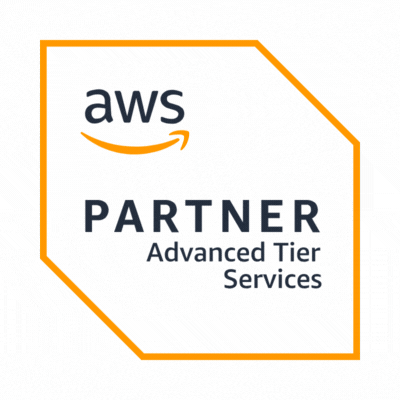As cloud adoption continues to rise, managing and optimizing cloud costs is a critical focus for organizations. This detailed guide explores best practices for cloud cost optimization, focusing on tools and strategies within the AWS ecosystem.
We’ll delve into monitoring and alerts, governance policies, and creating a robust cost optimization framework. By implementing these practices, organizations can achieve significant cost savings and ensure efficient cloud resource utilization.
What is Cloud Cost Optimization?
Cloud cost optimization is the strategic process of managing and minimizing cloud expenses while maintaining performance and scalability. This involves a range of practices, tools, and methodologies designed to ensure that cloud resources are used as efficiently as possible.
Importance of Cloud Cost Optimization
According to Flexera's 2023 State of the Cloud Report, 37% of enterprises spend more than $12 million annually on cloud services, with 80% exceeding $1.2 million per year. These significant expenses highlight the necessity of effective cost management strategies.
Monitoring and Alerts for Cloud Costs
Effective monitoring and alerting systems are crucial for tracking cloud expenditures and identifying opportunities for cost savings in real-time. AWS provides several tools to support these efforts.
Use AWS Cost Explorer
AWS Cost Explorer helps visualize, understand, and manage AWS costs and usage. It offers detailed insights into spending patterns and areas for cost optimization.
Historical Data Analysis
AWS Cost Explorer provides access to 13 months of historical data, allowing organizations to identify trends and anomalies in their spending patterns.
Forecasting
The tool can forecast future spending based on historical data, helping organizations plan their budgets more accurately.
Customized Views
Users can create customized views and reports to analyze specific aspects of their cloud spending, making it easier to identify high-cost areas.
By leveraging AWS Cost Explorer, organizations can gain a deeper understanding of their cloud expenditures and identify areas where cost optimization is possible.
Set Up AWS Budgets
AWS Budgets enable organizations to set custom cost and usage budgets and receive alerts when they approach or exceed these thresholds.
Budget Types
AWS Budgets can be set for various metrics, including overall cost, usage, and specific service spending.
Alerts and Notifications
When budgets are exceeded or are forecasted to exceed, AWS Budgets can send alerts via email or SMS, helping organizations take timely action to avoid overspending.
Integration with Cost Explorer
AWS Budgets integrates with AWS Cost Explorer, providing a comprehensive view of cost data and enabling more informed decision-making.
AWS Budgets are a proactive tool for managing cloud costs, helping organizations stay within their financial limits and avoid unexpected expenses.
Implement Cost Anomaly Detection
AWS Cost Anomaly Detection uses machine learning to identify unusual spending patterns, providing alerts when anomalies are detected.
Automated Monitoring
The tool continuously monitors cost and usage data, detecting anomalies without the need for manual intervention.
Customizable Thresholds
Users can set customizable thresholds for anomaly detection, tailoring the tool to their specific needs.
Actionable Insights
When anomalies are detected, the tool provides actionable insights, helping organizations understand the root cause of unexpected costs.
Cost Anomaly Detection is a valuable tool for identifying and addressing unexpected cloud expenses, ensuring more effective cost management.
Effective monitoring and alerts are essential for maintaining control over cloud expenditures. AWS provides robust tools like Cost Explorer, Budgets, and Cost Anomaly Detection, which help organizations track and manage their cloud costs in real-time.
Governance Policies for Cloud Cost Management
Establishing robust governance policies is critical for effective cloud cost management. These policies ensure that cloud resources are used efficiently and align with business objectives.
Define Clear Policies
Developing and enforcing clear policies for cloud resource management helps prevent resource sprawl and unnecessary expenses.
Provisioning and Deprovisioning
Establish guidelines for provisioning and deprovisioning cloud resources to avoid over-provisioning and underutilization.
Tagging and Categorization
Implement a comprehensive tagging strategy to categorize cloud resources by department, project, or team. This ensures better tracking and accountability.
Access Control
Define access controls to restrict resource usage to authorized personnel, reducing the risk of accidental or unauthorized expenditures.
Clear policies are the foundation of effective cloud cost management, helping organizations use their cloud resources more efficiently.
Regular Audits and Reviews
Regular audits and reviews of cloud resources help identify and eliminate waste, ensuring optimal resource utilization.
Automated Auditing Tools
Use tools like AWS Trusted Advisor to receive recommendations for cost optimization and security improvements.
Manual Reviews
Conduct manual reviews of cloud resources to complement automated tools, ensuring a thorough evaluation of cloud usage.
Performance Metrics
Monitor performance metrics to identify underutilized or idle resources, which can be de-provisioned or right-sized to reduce costs.
Regular audits and reviews are essential for maintaining efficient cloud resource utilization and minimizing unnecessary expenses.
Automate Cost Controls
Automating cost control actions helps organizations manage their cloud expenditures more effectively, reducing the need for manual intervention.
AWS Lambda
Use AWS Lambda to automate cost control actions, such as shutting down unused instances or scaling resources based on demand.
Auto Scaling
Implement Auto Scaling to automatically adjust resource capacity based on real-time demand, ensuring efficient resource usage.
Scheduled Resource Management
Schedule resources to be turned off during non-peak hours, reducing costs without impacting performance.
Automation is a powerful tool for managing cloud costs, helping organizations optimize resource usage and reduce manual workload.
Robust governance policies are crucial for controlling cloud spending. By defining clear policies, conducting regular audits, and automating cost controls, organizations can ensure efficient and cost-effective cloud resource management.
Creating a Cloud Cost Optimization Framework
A comprehensive cloud cost optimization framework integrates various practices and tools to systematically manage and reduce cloud expenditures.
Steps to Create a Framework
Set Clear Objectives
Defining clear objectives is the first step in creating a successful cost optimization framework.
Cost Reduction Targets
Set specific cost reduction targets to guide optimization efforts.
Performance Benchmarks
Establish performance benchmarks to ensure that cost reductions do not compromise service quality.
Alignment with Business Goals
Ensure that cost optimization objectives align with overall business goals and strategies.
Clear objectives provide direction and focus for cost optimization efforts, ensuring that they support broader business goals.
Identify Key Metrics
Identifying key metrics helps measure the success of cost optimization efforts and provides actionable insights.
Cost per Transaction
Measure the cost associated with each transaction to identify high-cost areas and opportunities for savings.
Cost per User
Track the cost of serving each user to optimize pricing and resource allocation.
Overall Cloud Spend
Monitor overall cloud spending to ensure that it stays within budget and aligns with financial targets.
Key metrics provide a framework for evaluating the effectiveness of cost optimization efforts and identifying areas for improvement.
Leverage AWS Cost Management Tools
AWS provides a suite of tools designed to support cost management and optimization efforts.
AWS Cost Explorer
Use AWS Cost Explorer to analyze spending patterns and identify cost-saving opportunities.
AWS Budgets
Set and enforce budgets using AWS Budgets to prevent overspending and maintain financial control.
AWS Cost and Usage Reports
Utilize AWS Cost and Usage Reports to gain detailed insights into cloud spending and usage patterns.
AWS cost management tools provide the data and insights needed to support effective cost optimization efforts.
Implement Rightsizing
Rightsizing involves adjusting the size and type of cloud resources to match actual workload requirements, reducing waste and optimizing costs.
Continuous Monitoring
Use tools like AWS Compute Optimizer to continuously monitor resource usage and provide rightsizing recommendations.
Automated Adjustments
Implement automated adjustments to right-size resources based on real-time usage data.
Regular Reviews
Conduct regular reviews of resource utilization to ensure that rightsizing efforts remain effective.
Rightsizing is a critical component of cost optimization, helping organizations reduce waste and ensure efficient resource usage.
Use Reserved Instances and Savings Plans
Reserved Instances and Savings Plans offer significant discounts for long-term commitments, providing substantial cost savings.
Analyze Usage Patterns
Use AWS Cost Explorer and other tools to analyze usage patterns and determine the best options for Reserved Instances and Savings Plans.
Commit to Long-term Use
Take advantage of Reserved Instances and Savings Plans to secure discounts for predictable workloads.
Monitor and Adjust
Continuously monitor usage and adjust commitments as needed to maximize savings.
Leveraging Reserved Instances and Savings Plans is an effective strategy for reducing cloud costs, especially for predictable workloads.
Creating a cloud cost optimization framework involves setting clear objectives, identifying key metrics, and leveraging AWS tools. By implementing best practices like rightsizing and using Reserved Instances, organizations can achieve significant cost savings and ensure efficient cloud resource utilization.
The Bottom Line
Effective cloud cost optimization is essential for maximizing the value of cloud investments. By implementing monitoring and alert mechanisms, establishing robust governance policies, and creating a comprehensive cost optimization framework, organizations can achieve significant cost savings and improve resource efficiency. AWS provides a suite of tools to support these efforts, ensuring efficient and cost
Ready to optimize your AWS costs? Book a cloud consultation session with our experts.




















